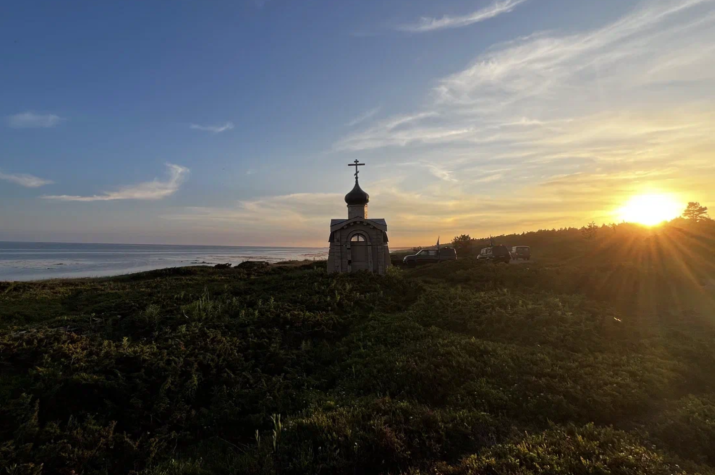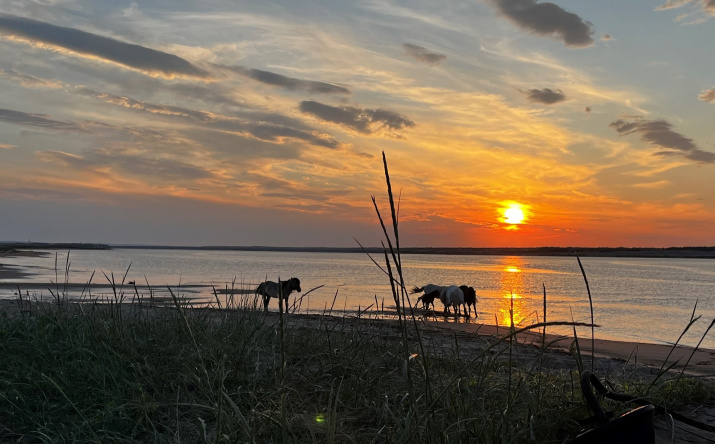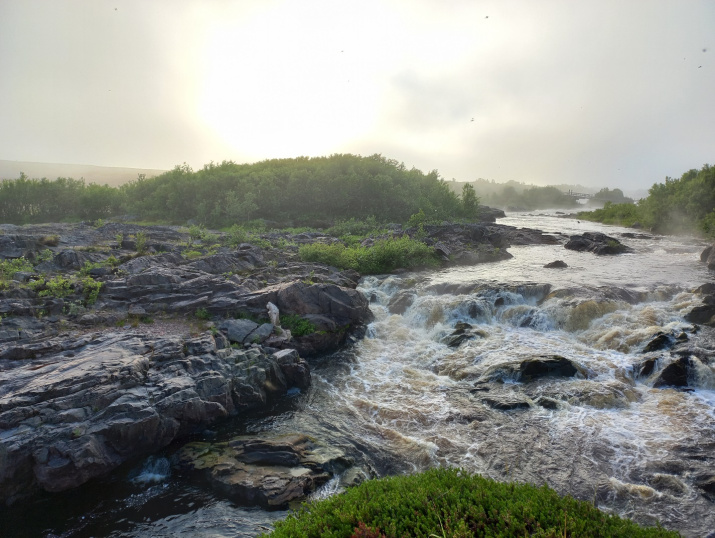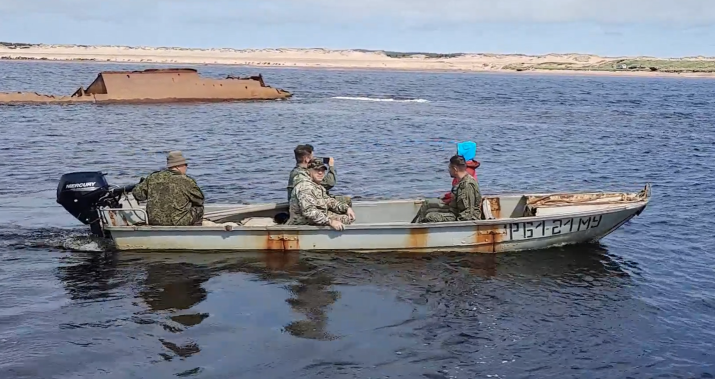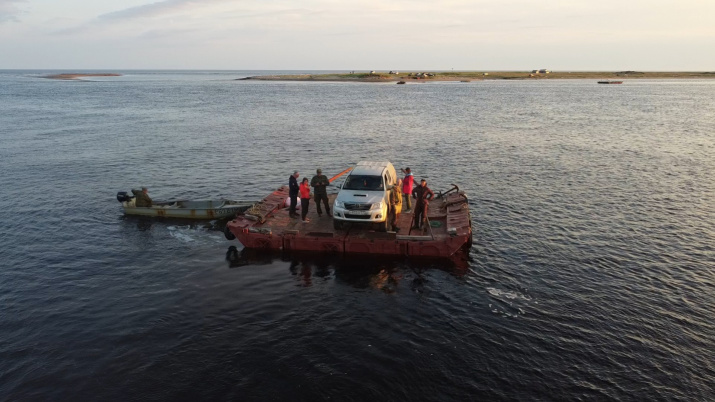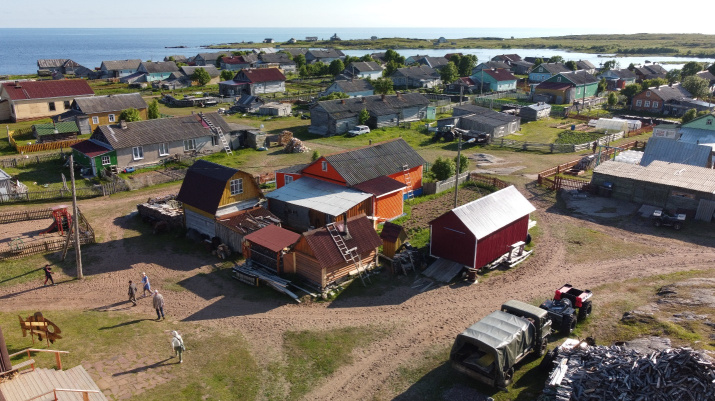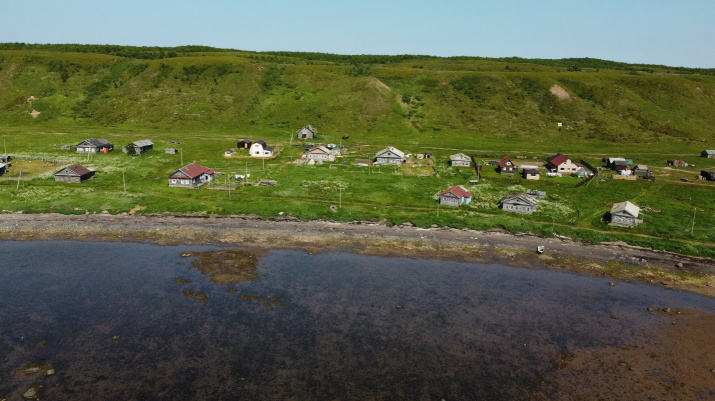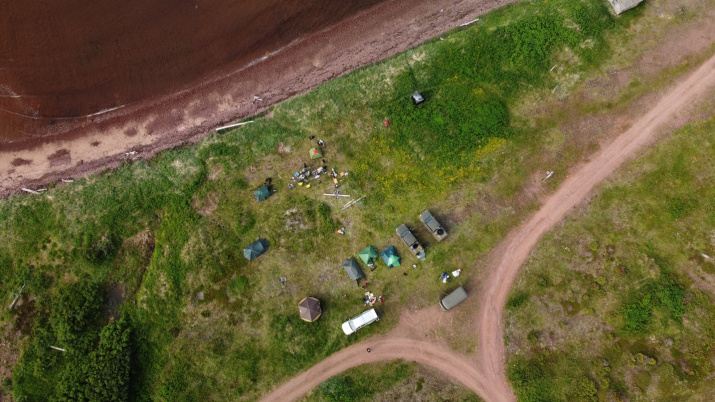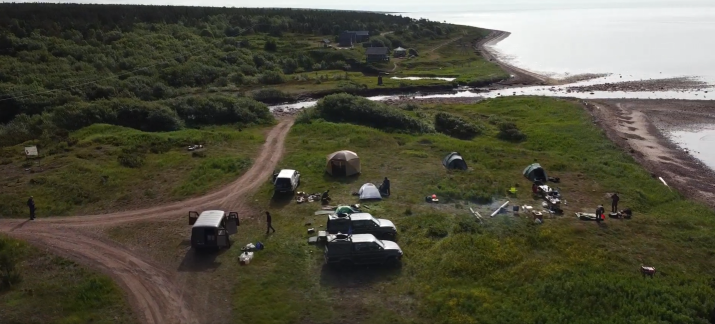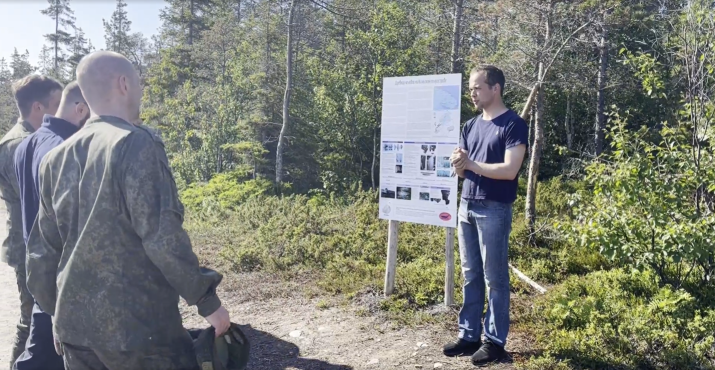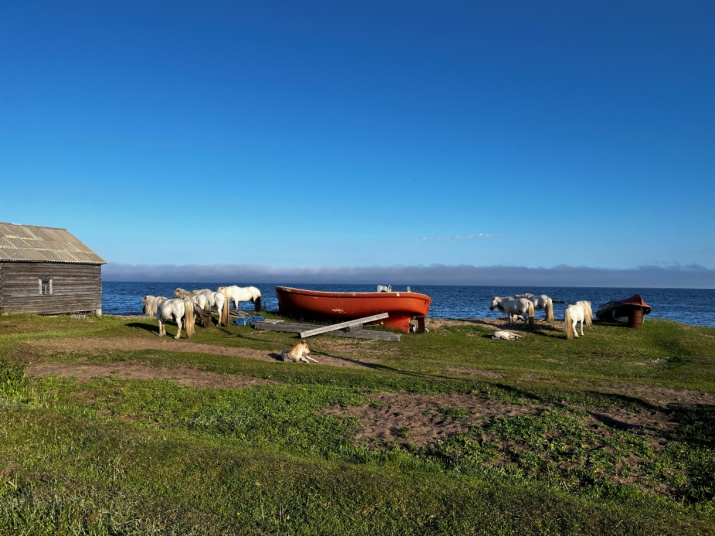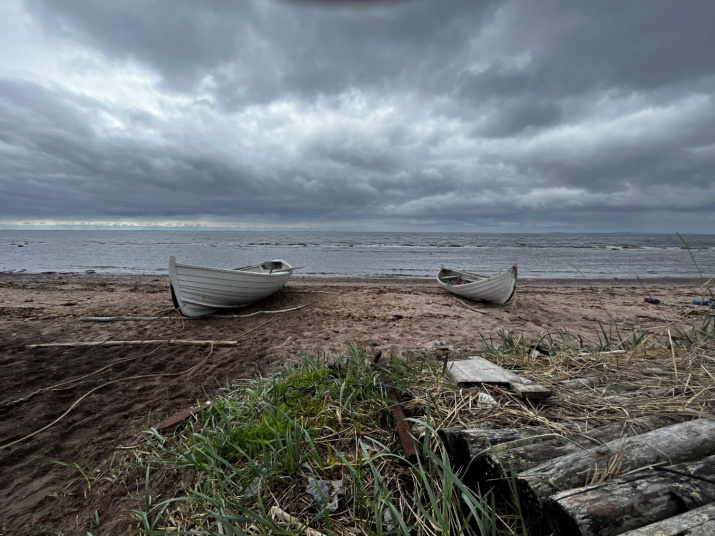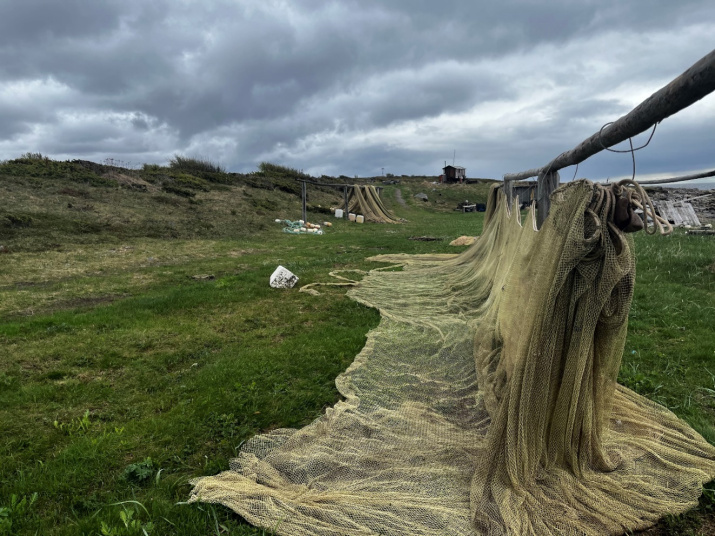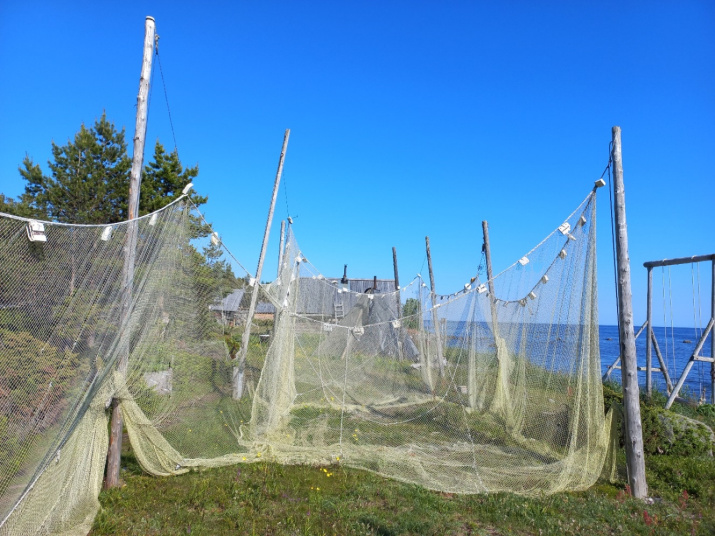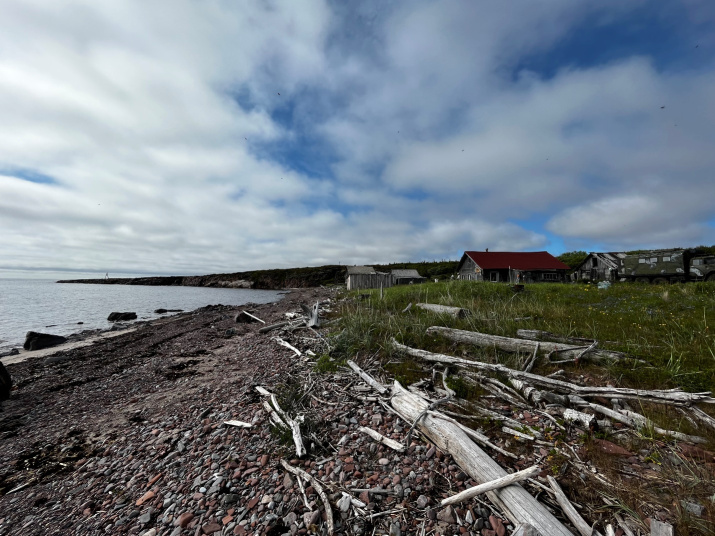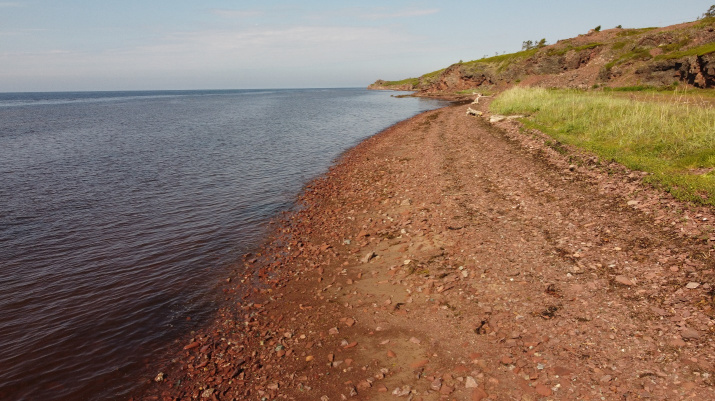The 12th Main Directorate of the Ministry of Defense of the Russian Federation continues its cooperation with the RGS and the scientific community. Immediately after the 2021 expedition of the Murmansk Regional Branch of the RGS and the 12th Main Directorate of the Ministry of Defense of the Russian Federation to the Rybachy Peninsula was over, work began on planning and preparing research trips in 2022. Dmitry Novikov, captain of the 2nd rank, a member of the Russian Geographical Society for the Murmansk Regional Branch, was appointed head of the expedition to the Tersk Coast. Ksenia Myachina, doctor of Geographical Sciences, leading researcher at the Institute of Steppe of the Ural Branch of the Russian Academy of Sciences, member of the Council of the Orenburg Regional Branch of the Russian Geographical Society, was invited as a scientific supervisor. The media group of the state radio and television company"Murmansk" was invited to create a popular science documentary.
The main objectives of the expedition were to study the cultural and historical features and traditions of the Pomors of the Tersk coast of the White Sea, as well as to study the landscape and ecological state of the territory. In accordance with the objectives, the expedition participants identified a number of tasks for themselves: to find the possibilities of preserving the historical and cultural heritage of the Pomor coast, to identify landscape and ecological features of the territory, to understand the role of anthropogenic factors in the formation of landscapes and the current geo-ecological situation, to assess the marine debris on the White Sea coast.
The choice of the direction of the new expedition was no accident. It was from the Tersk coast that the development of the Kola Peninsula and the entire Arctic began. Pomors, the migrants from the central part of the Eurasian continent, were the first to come here. The Tersk coast has been actively inhabited by people from Novgorod lands since the XV century . The first permanent settlement was the Korelsky pogost in Arzuga (currently the village Varzuga). It is mentioned in the chronicles of 1419, and the village of Umba is mentioned in the chronicles of 1466. Tonyas (Pomor fishing huts) and huts used for making salt appeared on the seashore. Some of them grew and turned into settlements that have survived to the present time: the village of Porya Guba, the village of Kashkarantsy, the village of Olenitsa, the village of Chapoma, the village of Pyalitsa, the village of Tetrino, the village of Chavanga and others.
In five days, the participants of the expedition covered more than 1200 km by car and by boat.
The route ran through the entire Kola Peninsula from north to south, from Murmansk to Kandalaksha, and then along the White Sea coast to the east through the ancient Pomor villages of Umba, Olenitsa, Kuzreka, Kashkarantsy, Varzuga, Kuzomen, Chavanga and Tetrino.
During the first day, the expedition reached the mouth of the Lodochny creek, which flows near the village of Varzuga, and set up the base camp.
The next day, the participants of the trip were divided into groups and moved in different directions with different research tasks.
During the expedition, the participants examined Pomor camps, fishing villages and settlements with a rich history. The expedition participants talked to local historians, old-timers and visiting residents of coastal settlements about their way of life, traditions and customs and learned interesting cultural, historical and everyday facts, as well as specified some of the previously known ones. They leared that the Pomors of different coasts of the White Sea have a lot in common in everyday life, language and culture, they all consider themselves descendants of the first explorers of the north from the Novgorod lands. Pomor culture in many ways resemble the customs of neighboring Finno-Ugric peoples: Sami, Finns, Karelians. There are many borrowings were from their languages in the Pompor language, for exapmple, the names of the realities of northern nature, household items and tools of crafts, which also indicates the borrowing of these objects themselves and methods of fishing. Today, some Pomor families retain the features of traditional life.
The basis of the Pomors' life was marine and river fishing. The villages of the Tersk coast had their own "specialization" in fishing. For example, it was mainly salmon in the village of Varzuga and mainly herring in the village of Kashkarantsy. Those who lived in Kuzomen' and Kashkaransy sometimes went to hunt seals on the ice in the area of the White Sea Throat. Pomors of the entire White Sea coast, including the Tersk, also went cod fishing in Murmansk to get large Barents Sea cod and halibut. But the Terek Pomors engaged in these difficult and dangerous activities less oftern than the others, since the rich rivers of the Terek coast often provided enough for them to live off.
The tonys visited by the expedition participants prove that approaches to fishing, its methods and tools have not undergone significant changes over the centuries. Boats called karbases are still made of wood and have a special design that provides enough stability for lifting a heavy seine out of the water.
Nets are also made from traditional materials
The only thing that has been introduced into the fishing processes as an "achievement" of civilization is plastic bottles used as floats for seines, instead of the same ones, but made of birch bark.
As part of the international MALINOR project, an assessment of marine debris on the White Sea coast was carried out. It showed its almost complete absence on the surveyed coastal areas of the White Sea, in contrast to the heavily polluted coast on the Sredny Peninsula in the Barents Sea. This once again confirms the crucial role of the currents of the Gulf Stream system in bringing marine debris from west to east.
The participants of the expedition believe that such comprehensive local history research trips are of great benefit to all participants, allowing them to significantly broaden their horizons, mutually integrate knowledge and skills, combine different goals and objectives, as well as develop interregional cooperation between the branches of the Russian Geographical Society.
The Murmansk Regional Branch of the Russian Geographical Society expresses its gratitude to the leadership of the 12 Main Directorate of the Ministry of Defense of the Russian Federation, the Institute of Steppe of the Ural Branch of the Russian Academy of Sciences, the Orenburg Regional Branch of the Russian Geographical Society and the state radio and television company “Murmansk” for their assistance in organizing and conducting the expedition.

